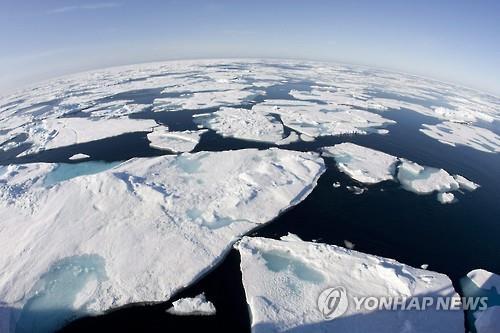지구 온난화로 북극 기온이 115년 만에 최고치를 찍으면서 주변 생태계도 급변하고 있다.
미국 국립해양대기청(NOAA)이 15일(현지시간) 발표한 연례 보고서인 '2015 북극 리포트 카드'에 따르면 지난해 10월부터 올해 9월 사이 북극 기온은 장기평균보다 1.5℃ 높아 1900년 이래 최고치를 기록했다.
북극 기온은 20세기 초와 비교하면 3℃ 상승한 것으로 나타났다.
그 결과 이 기간 중 북극 얼음이 가장 많아진 시점은 2월 25일로 관측됐는데 이는 평균보다 열닷새 빠른 것이다. 최대치 얼음양도 1979년 관측 시작 이래 가장 적었다.
북극 얼음이 가장 적어진 시점은 9월 11일이었고 이때 기록된 연중 최소치 얼음양은 1979년 관측 시작 이래 4번째로 적었다.
북극 얼음이 '젊어지고 있다'는 문제도 노출했다.
NOAA가 3월에 위성으로 관측한 결과 북극 얼음의 70%는 생긴 지 1년 이내의 것이었다. 4년을 넘긴 얼음은 3%에 불과했다.
 |
(Yonhap) |
<관련 영문 기사>
Arctic posts record warmth over land, less ice in its ocean
The warming Arctic has set another record.
The average air temperature over Arctic land reached 2.3 degrees F (1.3 degrees C) above average for the year ending in September. That's the highest since observations began in 1900.
The new mark was noted in the annual Arctic Report Card, released Tuesday by the National Oceanic and Atmospheric Administration. The Arctic centers on the North Pole and reaches into North America and Eurasia.
“Warming is happening more than twice as fast in the Arctic than anywhere else in the world. We know this is due to climate change,” NOAA chief scientist Rick Spinrad told reporters in San Francisco at a meeting of the American Geophysical Union.
Another record emerged for sea ice, which appears when Arctic Ocean water freezes. When it reached its peak coverage in February, it was the lowest maximum extent since records began in 1979. The minimum ice coverage, reached in September, was the fourth lowest on record.
The retreat of sea ice is considered a threat to animals like walruses, which use it for mating, giving birth and getting out of the water.
Walruses can use land instead to leave the water, but they are crowding onto beaches where a stampede can be devastating for calves, two editors of the report card told AP.
Walruses have been hauling themselves out on land in northwest Alaska, a recent phenomenon, Martin Jeffries of the federal Office of Naval Research and Jackie Richter-Menge of the U.S. Army Corps of Engineers wrote in a joint email.
Snow cover in June in both the North American and Eurasian parts of the Arctic was at the second lowest level since records began in 1967. Reduced snow cover lets more sunlight through to the land, which absorbs the energy and gets warmer. Since 1979, the extent of June snow cover has been dropping by 18 percent per decade, the study said. (AP)







